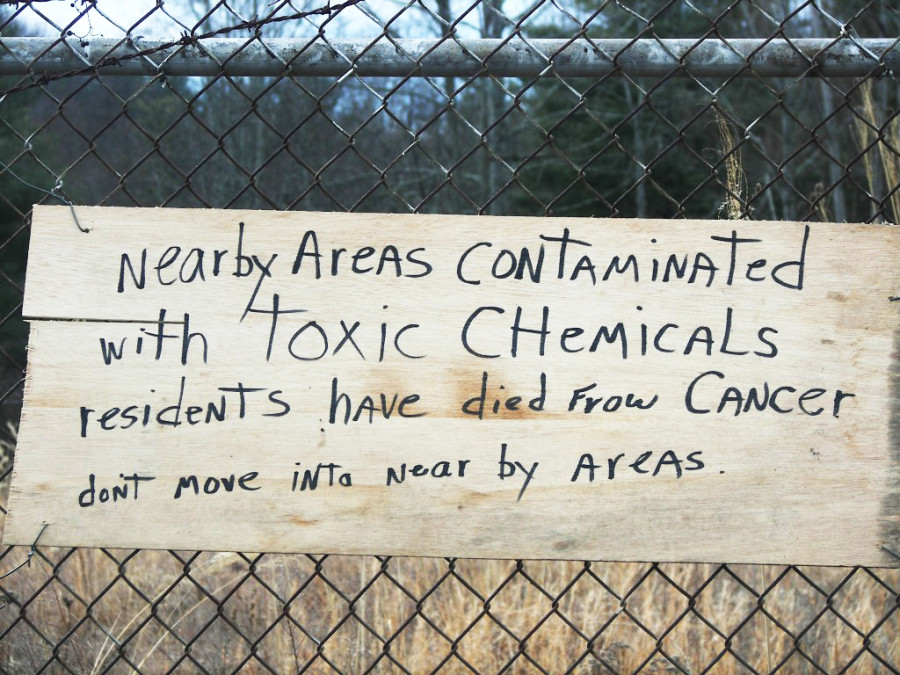The United States Environmental Protection Agency announced on Wednesday, December 7 that it is proposing a ban on certain uses of the chemical degreaser and spot removal agent trichloroethylene (TCE), which has been identified as toxic to humans.
“For the first time in a generation, we are able to restrict chemicals already in commerce that pose risks to public health and the environment,” said Jim Jones, assistant administrator for the Office of Chemical Safety and Pollution Prevention. “Once finalized, today’s action will help protect consumers and workers from cancer and other serious health risks when they are exposed to aerosol degreasing, and when dry cleaners use spotting agents. I am confident that the new authority Congress has given us is exactly what we need to finally address these important issues.”
The proposed ban comes as a result of a 2014 health assessment that determined TCE had the potential to pose “a range of adverse health effects, including cancer, development and neurotoxicological effects, and toxicity to the liver” to consumers and workers alike.
The ban would prohibit the production, import manufacturing of and distribution of TCE in aerosol degreasing products, as well as its use in dry cleaning facilities. Additionally, the EPA is considering a separate regulatory action for the use of TCE in vapor decreasing products. Other uses of TCE, which has been included on a list of ten chemicals evaluated for risk under the he Toxic Substances Control Act of 1976, will also be examined by the EPA, though no regulatory proposals for those uses have been submitted yet.
Public comment on the proposed ban of TCE as a chemical degreaser and spot removal agent will be open for sixty days after publication in the Feral Register.
To learn more about the EPA’s proposed restrictions on TCE usage, check out: epa.gov.
The Mills Gap Road Concerned Citizens For A CTS Cleanup Community Advisory Group, which acts as a liason between the EPA and the community surrounding the CTS of Asheville superfund site, issued the follow statement on the heals of the EPA’s announcement regarding TCE regulation:
STATEMENT ON USEPA ACTION TO BAN TCE:
Mills Gap Road Concerned Citizens For A CTS Cleanup CAGOn December 7, 2016, the United States Environmental Agency moved to ban the use of the toxic carcinogen trichloroethylene (TCE) as an aerosol degreaser and spot stain remover in dry cleaners. This would be the first such ban in the 27 year history of the Toxic Substances Control Act. This represents a major milestone for the Frank R. Lautenberg Act Chemical Safety for the 21st Century Act which was passed in June 2016.
TCE has been designated as a known human carcinogen by organizations such as the National Toxicology Program, the Agency for Toxic Substances and Disease Registry and the International Agency for Research on Cancer to list a few. Studies have demonstrated severe health impacts including, but not limited to, pancreatic, liver, kidney, sinus, throat, lung and brain cancers, fetal heart defects, compromised immune systems, and Parkinson’s disease.
Buncombe County residents have been adversely impacted by TCE contamination with the CTS NPL Superfund Site, the Chemtronics NPL Superfund Site and Blue Ridge Plating NPL Superfund Site. The members of the South Asheville community working as the Mills Gap Road Concerned Citizens for a CTS Cleanup take stock in this development and offer our gratitude for this move to ban TCE. This is long overdue and it simultaneously validates the work that our community CAG has been doing since 2008 to bring attention to the devastation wrought by the ongoing release of TCE and other dangerous chemicals from the CTS site.
We have seen far too many families impacted by a myriad of health problems from brain tumors to scores of cancers in proximity to the CTS site. We have witnessed over a dozen residents evacuated due to dangerous levels of TCE in the air near the old plant. We worked diligently to provide information and data to and testified in governmental hearings at the state and federal level. The Mills Gap Road Concerned Citizens for a CTS Cleanup generated the materials that formed the basis of the case that made its way to the Supreme Court of United States.
We have worked with other important organizations and individuals, such as Lenny Siegel’s Center for Public Environmental Oversight and Jerome Ensminger and the US Marines at Camp Lejeune, fighting to protect human health, wildlife and the environment from chemical contamination like the releases of TCE. While we are gratified by this action taken by USEPA, we are not content and will not be until sites like CTS are cleaned properly and those responsible for preventing such cleanups are held responsible.
EPA Region 4 was first made aware of the CTS site being a potential environmental disaster in 1985. EPA Region 4 was informed in writing on two separate occasions in 1990 that there was a suspected release of contamination impacting the Rice families. EPA Region 4 conducted an unauthorized evaluation of the CTS site in 1990, which included access the Rice property without permission, testing their property and withheld the confirmation of widespread contamination from the CTS site.
The families continued being unknowingly impacted by polluted groundwater until 1999. To date the USEPA has spent more money obfuscating its role in harming the residents, more money on incessant testing and research than actually cutting off the release of the contamination at its source. We are at the precipice of 2017 and the source of TCE at the CTS site remains unchanged.
We applaud this move to address the threat posed by TCE in the environment it is something that community groups from across the nation have pushed for. This action proves that TCE is and has been a clear and present danger to human health, wildlife and the environment. It should serve has the impetus for a renewed push to bring in the appropriate people from USEPA, who are not compromised with conflicts of interest, and get the source of TCE mitigated. Any rationale for not conducting the long overdue rapid response called for in April 2002 flies in the face of the USEPA action to ban TCE.
On Dec. 7, the EPA also issued notice that it had reached an agreement with the Potentially Responsible Parties at the CTS of Asheville site on a $9 million Interim Cleanup Plan. For more information on the plan, check out mountainx.com/blogwire/epa-doj-announce-30-day-public-comment-period-on-cts-superfund-sites-interim-cleanup-plan/.
For more information on The CTS of Asheville superfund site, click here.




Before you comment
The comments section is here to provide a platform for civil dialogue on the issues we face together as a local community. Xpress is committed to offering this platform for all voices, but when the tone of the discussion gets nasty or strays off topic, we believe many people choose not to participate. Xpress editors are determined to moderate comments to ensure a constructive interchange is maintained. All comments judged not to be in keeping with the spirit of civil discourse will be removed and repeat violators will be banned. See here for our terms of service. Thank you for being part of this effort to promote respectful discussion.